
When Disney Went Christian...
The Small One Review and Retrospective
Disney is often seen as a symbol of America, a company grown from the country’s early can-do heart and enterprising spirit. In Disneyland, in Disney cartoons, in Walt Disney himself…families found a refuge from their greater troubles, be it Depression-era desperation or the 1960’s nuclear scare. Disney was classic Americana, varnished and untarnished…a sanctuary of the country’s optimistic best.
But the character of America wasn’t just one of family and apple pies and fireworks on the Fourth of July—the land was an innately Christian nation, its people united not just by a constitution, but by an ancient belief and creed. Beyond man, kings, presidents, and certainly any government…there was God. A virgin birth. A savior who would inspire the destiny and establish the character of the entire western world.
Funny, then, that despite Disney’s seeming devotion to American values, its art rarely reflects that religious element. This is especially evident in the company’s animation output; God is scarcely mentioned, a church rarely seen. Movies like Cinderella and Sleeping Beauty feature maidens of an almost Marian quality, and yet, nary do they ever pray…their “prayers,” rather, repurposed into simplified wishes. Only Snow White, the sweetest and most innocent of her princess kin, dares a solitary prayer in her landmark film…asking God if He might coax Grumpy, that ornery oaf of a dwarf, into liking her more. Indeed, finding overtly Christian-themes in any Disney cartoon or animated feature is surprisingly difficult.
But The Small One is the rare exception. Hobbled together in 1978 by a modest team of young Disney animators, the 20-minute film follows the travails of a boy seeking a new home for “Small One,” his beloved donkey. No one wants the “scrawny” beast except for the heartless tanner, who desires only the animal’s valuable pelt. So the two buddies run, blunder, and eventually, despair within the gloom of an unhappy alley. Is the boy’s donkey doomed to glue? But, as if sent by an angel, a kindly stranger appears. He’s traveling to Bethlehem and needs a ride for his pregnant wife.
And the rest, they say, is history.
The featurette is based on a novelette of the same name, a story written by Charles Tazewell. If there’s any question regarding the film’s message and intent, the book leaves no doubt—Small One played a big role in the earliest moments of the Christ-child’s life. But the movie, in Disney’s typical religious-ambivalent style, is never too obvious, never too direct. No names are given, no birth is shown, not even a prayer is uttered. The closest hint viewers receive is a brief, closing shot of a manger lit in the distance, glowing beneath a star shining like a righteous cross. In future releases, even this symbol got softened, the “cross” redrawn to resemble a beautiful but more-typical star.
Some say The Small One should have become a Disney classic. And for its uniquely and unusually Christian message, maybe it should have. But the movie itself feels rushed, a little unpolished…marred, just slightly, by some misplaced pacing. The film’s middle is its weakest, with middling music and no compelling villain or additional plot development to retain the audience’s interest. Redemption comes in the ending, the little donkey becoming but the steed to the littlest king.
Today, the film is largely buried, seeing only two low-key DVD releases before being offered without ceremony on the Disney+ streaming service. Its obscurity is puzzling when juxtaposed against other Disney Christmas classics of the era—namely, Mickey’s Christmas Carol released just five years later. Perhaps it’s that overt Christian theme that’s to blame. Or maybe, it’s because the controversial Don Bluth, long held as a traitor to the Disney Empire, directed its production. Or perhaps, Disney has finally traded its Christian ambivalence for outright apathy. Even animosity. Whatever the reason, A Small One is that rare Disney production that, despite some imperfections, truly captures that one quality so commonly missing from the company’s creative canon.
Walt Disney made his fortune capitalizing on the notions of hope and dreams. But behind every wish is the one who listens, the God from which all imagination comes.--D
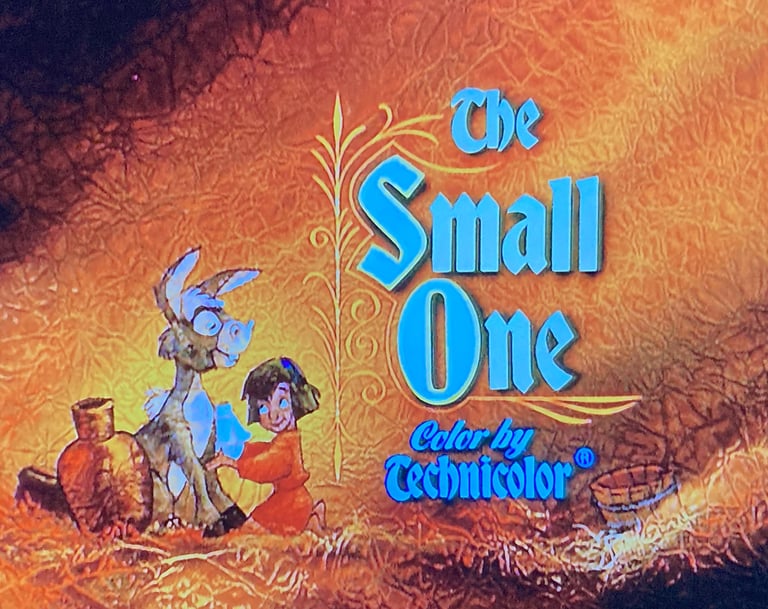

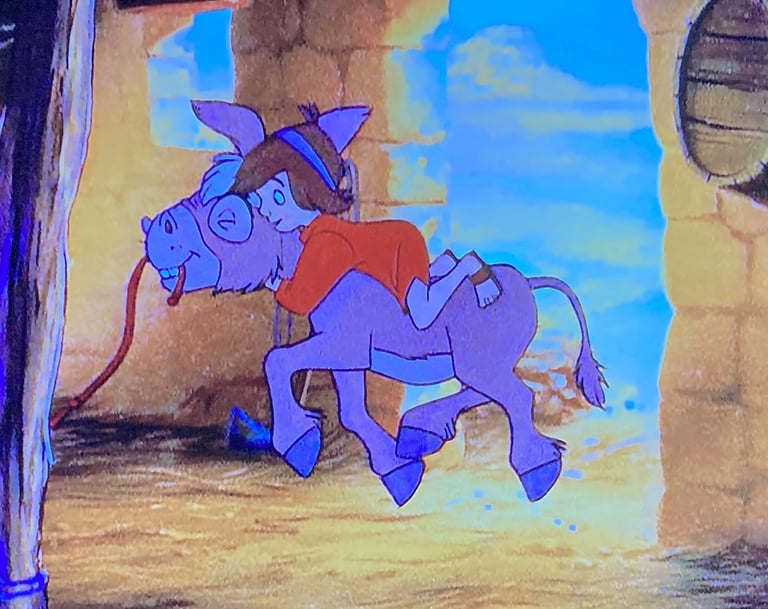

The boy--never named in the cartoon--is reminiscent of a similar child The Yearling who befriends a baby deer. Both children suffer from some sense of loneliness--their animal friends, really, their only friends.
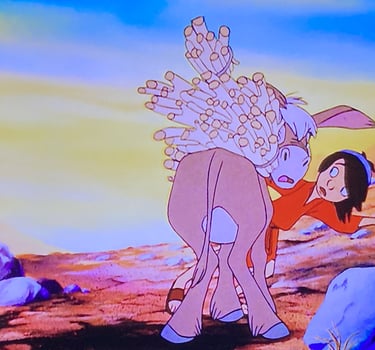



Small One, as the movie soon shows, has become too old to carry his share of the family's daily burdens.
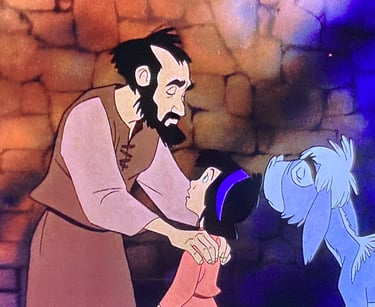



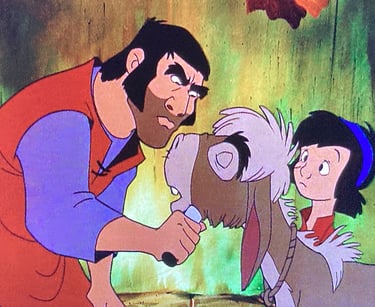

Although not unkindly, the boy's father is both insistent and firm: the donkey must be taken to the city and sold. Distraught but obedient, the child hopes to at least give his friend away to a kindly soul. Sadly, all he finds is the tanner, a man only desiring the animal's hide.
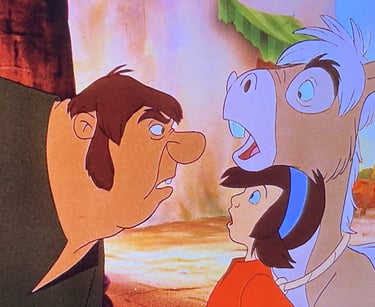

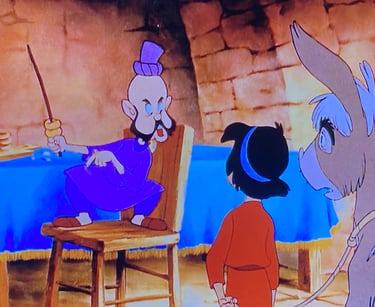

The film's middle portion is its weakest. Here, the pair bounce between rude, disinterested merchants while another three sing an odd, unnecessary song.
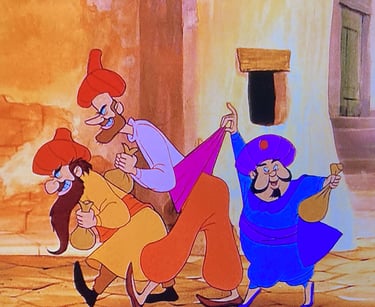

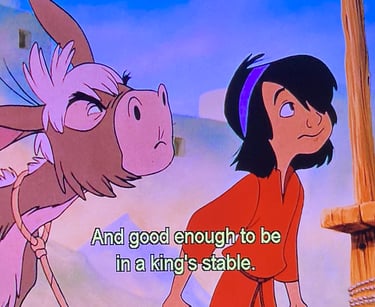

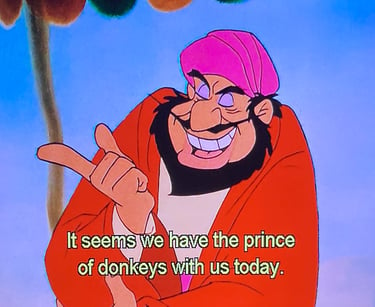



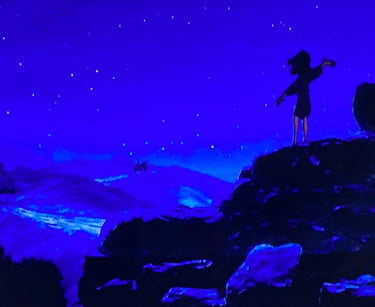

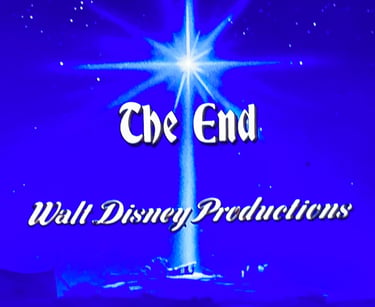

The boy defends his friend against the belligerent jibes of a sneering auctioneer, their two exchanges offering an almost prophetic glimpse into certain future events.
When all seems lost, a kindly stranger purchases Small One for a fateful trip to Bethlehem. The film ends on a star shining bright over a manger...although, in the original cut, this star more resembled a strident cross, foreshadowing an even greater story to come.
Contact: lostnostalgiaproductions@gmail.com
Website: www.lostnostalgia.com
Like what we're doing? Please consider throwing us a dollar into our Patreon page's tip jar!


